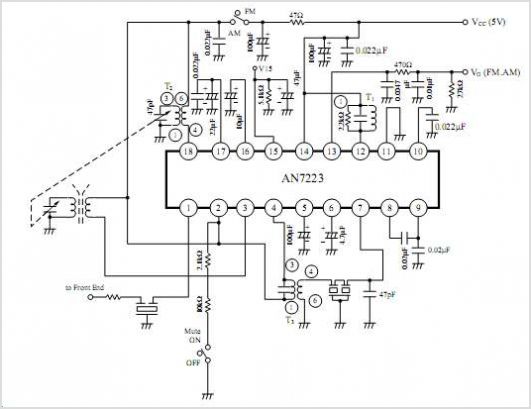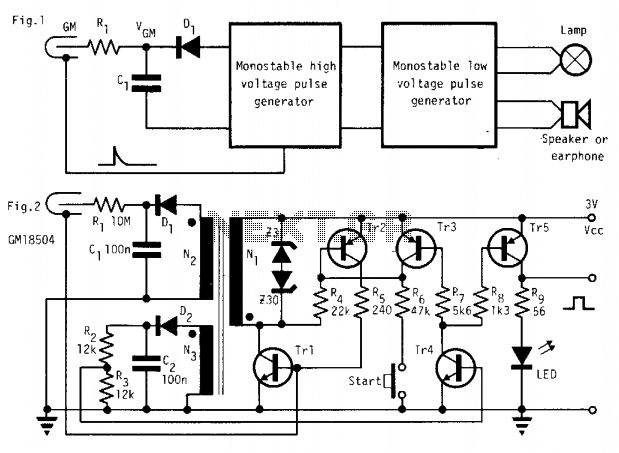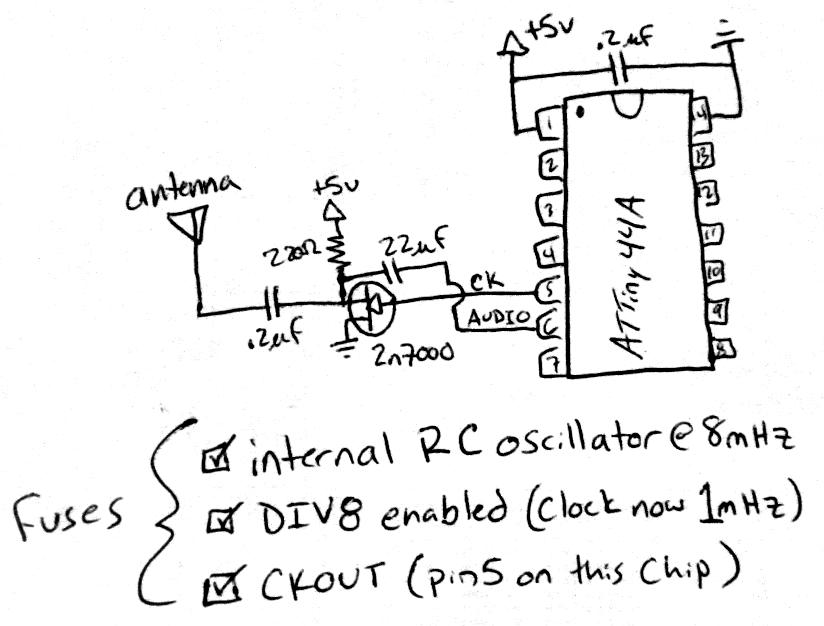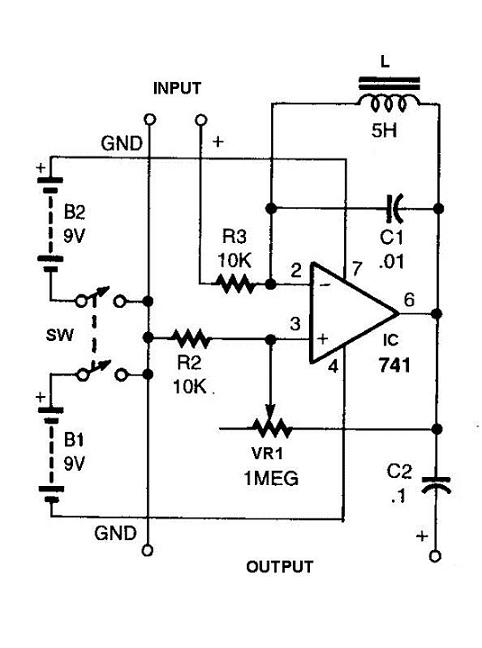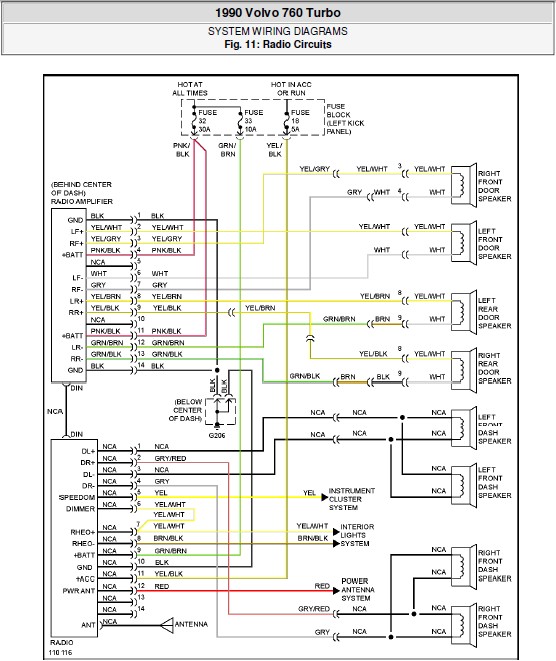
DIY FM Radio Kit
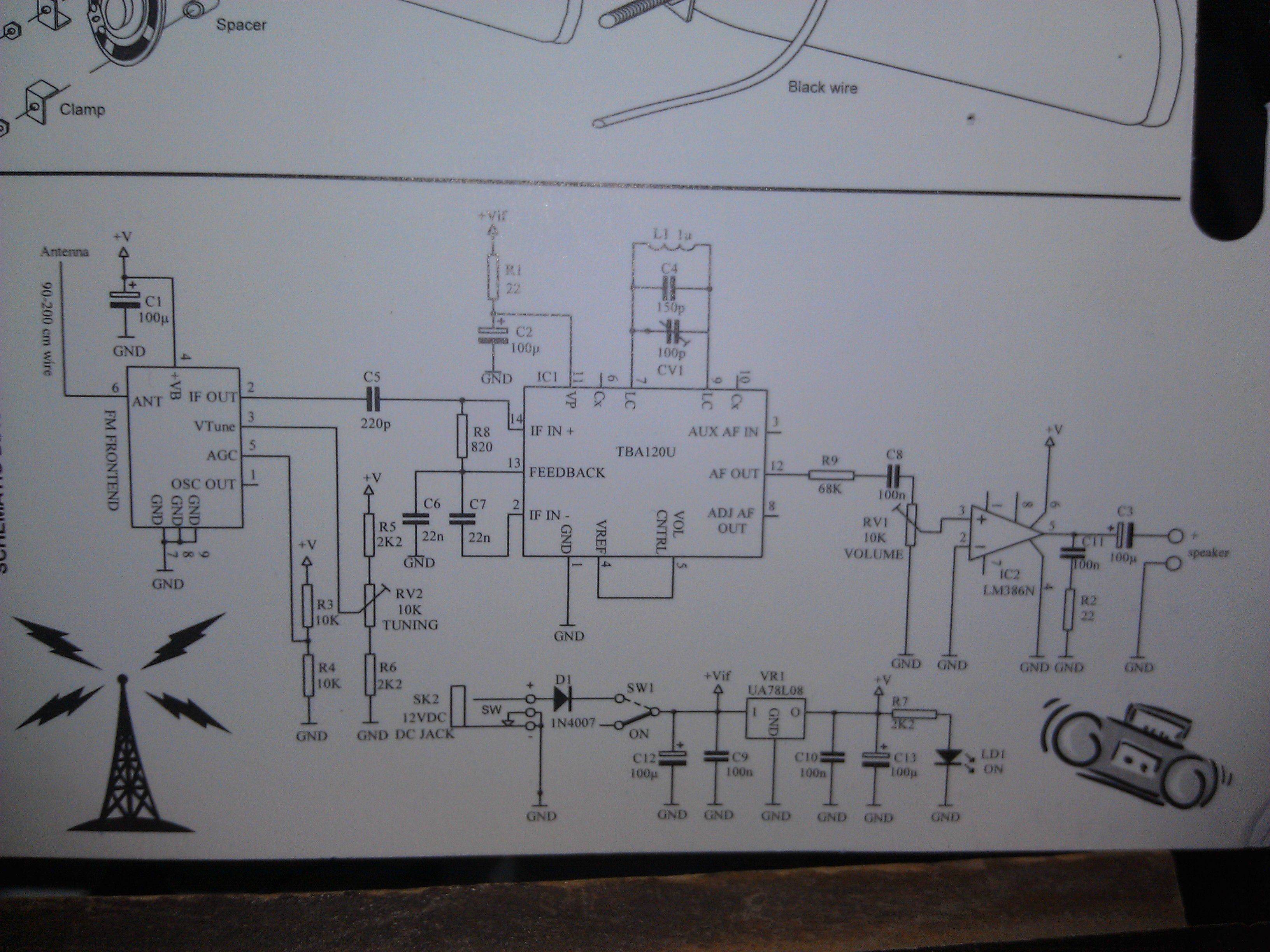
An FM Radio kit manufactured by Velleman-Kit and sold by Radioshack was recently assembled. The assembly process took approximately two hours, primarily due to distractions. The instructions provided are generally easy to follow, but they lack explicit details regarding the soldering of components to their designated positions. The components included in the FM radio kit are specified in the assembly diagram, which indicates where each resistor should be soldered on the circuit board. For instance, the 22-ohm resistor is to be soldered at positions R1 and R2. There is one diode to be soldered at position D1, with a caution to observe polarity to ensure functionality. Care must be taken when soldering the tiny pins of the IC sockets to avoid solder bridges. The 14-pin socket is located at position IC1 and the 8-pin socket at IC2, with alignment of the notches being crucial. The voltage regulator is to be placed at position VR1, ensuring that the flat side aligns with the circuit board markings. The kit includes one LED, which should be placed in the ON position instead of the indicated LD1 position on the board. Proper placement of the cathode is essential. Capacitors are to be placed at positions C1, C2, C3, C12, and C13, requiring careful attention to their orientation. The FM Front End component is provided by Velleman, with a designated area for soldering on the board. After soldering the IC sockets, both the 14-pin and 8-pin ICs should be inserted, ensuring that the notches align correctly. The final steps involve installing the speaker onto the circuit board using screws and nuts, connecting the speaker's terminals, and soldering a black wire for the antenna. Once completed, the FM radio can be powered with a 12V connector, allowing the user to tune in to their favorite FM station. This project serves as an excellent introduction to soldering for beginners.
The FM Radio kit from Velleman-Kit presents an engaging opportunity for individuals to develop soldering skills while constructing a functional electronic device. The assembly process emphasizes the importance of precision in soldering, particularly when dealing with small components such as IC sockets and diodes. Each component's placement is critical for the overall functionality of the radio, and the instructions guide the user through the necessary steps to ensure correctness.
The circuit board layout is designed to facilitate easy identification of component positions, with clear markings for resistors, capacitors, diodes, and IC sockets. The inclusion of a voltage regulator is essential for maintaining stable operation, and attention to the orientation of components like the LED and capacitors is necessary to prevent malfunction.
When soldering, it is advisable to use a fine-tipped soldering iron to minimize the risk of excess solder and potential short circuits. The assembly process not only reinforces technical skills but also enhances understanding of basic electronic principles, such as circuit connectivity and component functionality.
Upon completion, the integration of the speaker and antenna provides the final touch needed for the radio to operate effectively. The simplicity of the design, combined with the satisfaction of achieving a working radio, makes this kit an ideal project for novices in electronics. Following the assembly, users are encouraged to explore tuning frequencies and understanding signal reception, further enhancing their learning experience in the field of electronics.I recently bought an FM Radio kit made by Velleman-Kit and sold by Radioshack. I have not had time to build it but this Thursday, I sat down, played some Doctor Who on my Kindle Fire HD, and built this kit with my solder iron and solder. Total time took me two hours (the reason for this is because I kept getting distracted with Doctor Who).
The i nstructions are fairly easy to understand, however, instructions are not explicit in that you have to make the connection to solder the components to their respective position. I`ll try to explain as close as possible how to build this fun little project. The components that came with the FM radio kit are as follows. The diagram tells you which resistor to solder to which circuit position on the circuit board. For example, the 22 ohms resistor should be soldered on R1 and R2 positions on the circuit board. There is only one diode you have to solder on and it is on position D1. Make sure that you watch the polarity because if it is inserted wrong, it will not work. Because of the tiny pins located on the bottom of the IC sockets, you must be very careful with soldering.
There is a chance you can use to much solder and cause a solder bridge between pins. The 14 pin socket is in position IC1 while the 8 pin is in IC2. Make sure the position of the notch on the socket matches the diagram on the circuit board. Make sure that the regulator goes on position VR1 and also that the flat portion of the regulator is on the same side of the flat line diagram on the circuit board. There is only one LED in the kit and the manual says it should be put on LD1 position; however, on my board there is no LD1 position so instead put it in the position that says ON.
Make sure the cathode (the longer lead) is inserted in the hole that has the white stripe. These are a different type of capacitors than the ones used in step 5. These are placed in positions C1, C2, C3, C12, and C13. Make sure that the cathode is placed through the correct hole or else it might not work. The FM Front End is given by Velleman so I do not know if one can make their own. The position to solder this is on is the designated area. Basically, you will know where it is by looking at the circuit board. Remember the IC Sockets we soldered in step 4 We now insert both the 14 pin and 8 pin ICs into the sockets. Make sure the notch matches the same notch side on the sockets. The last step is to install the speaker onto the circuit board, mount it using the screws and nuts, then connect the positive and negative terminals of the speaker to the circuit board, and finally solder on the black wire that will act as the antenna.
Should be fairly simple and by this time you should be fairly familiar with the circuit board to know where these components need to go. By this step you should be done with your FM radio and the only thing that needs to be done is plug in a 12V power connector, turn the radio on, and tune in to your favorite FM station.
That project was very fun to make and it was a good starter project to get someone into the world of soldering. Have a project you want me to try Let me know by commenting below. 🔗 External reference
The FM Radio kit from Velleman-Kit presents an engaging opportunity for individuals to develop soldering skills while constructing a functional electronic device. The assembly process emphasizes the importance of precision in soldering, particularly when dealing with small components such as IC sockets and diodes. Each component's placement is critical for the overall functionality of the radio, and the instructions guide the user through the necessary steps to ensure correctness.
The circuit board layout is designed to facilitate easy identification of component positions, with clear markings for resistors, capacitors, diodes, and IC sockets. The inclusion of a voltage regulator is essential for maintaining stable operation, and attention to the orientation of components like the LED and capacitors is necessary to prevent malfunction.
When soldering, it is advisable to use a fine-tipped soldering iron to minimize the risk of excess solder and potential short circuits. The assembly process not only reinforces technical skills but also enhances understanding of basic electronic principles, such as circuit connectivity and component functionality.
Upon completion, the integration of the speaker and antenna provides the final touch needed for the radio to operate effectively. The simplicity of the design, combined with the satisfaction of achieving a working radio, makes this kit an ideal project for novices in electronics. Following the assembly, users are encouraged to explore tuning frequencies and understanding signal reception, further enhancing their learning experience in the field of electronics.I recently bought an FM Radio kit made by Velleman-Kit and sold by Radioshack. I have not had time to build it but this Thursday, I sat down, played some Doctor Who on my Kindle Fire HD, and built this kit with my solder iron and solder. Total time took me two hours (the reason for this is because I kept getting distracted with Doctor Who).
The i nstructions are fairly easy to understand, however, instructions are not explicit in that you have to make the connection to solder the components to their respective position. I`ll try to explain as close as possible how to build this fun little project. The components that came with the FM radio kit are as follows. The diagram tells you which resistor to solder to which circuit position on the circuit board. For example, the 22 ohms resistor should be soldered on R1 and R2 positions on the circuit board. There is only one diode you have to solder on and it is on position D1. Make sure that you watch the polarity because if it is inserted wrong, it will not work. Because of the tiny pins located on the bottom of the IC sockets, you must be very careful with soldering.
There is a chance you can use to much solder and cause a solder bridge between pins. The 14 pin socket is in position IC1 while the 8 pin is in IC2. Make sure the position of the notch on the socket matches the diagram on the circuit board. Make sure that the regulator goes on position VR1 and also that the flat portion of the regulator is on the same side of the flat line diagram on the circuit board. There is only one LED in the kit and the manual says it should be put on LD1 position; however, on my board there is no LD1 position so instead put it in the position that says ON.
Make sure the cathode (the longer lead) is inserted in the hole that has the white stripe. These are a different type of capacitors than the ones used in step 5. These are placed in positions C1, C2, C3, C12, and C13. Make sure that the cathode is placed through the correct hole or else it might not work. The FM Front End is given by Velleman so I do not know if one can make their own. The position to solder this is on is the designated area. Basically, you will know where it is by looking at the circuit board. Remember the IC Sockets we soldered in step 4 We now insert both the 14 pin and 8 pin ICs into the sockets. Make sure the notch matches the same notch side on the sockets. The last step is to install the speaker onto the circuit board, mount it using the screws and nuts, then connect the positive and negative terminals of the speaker to the circuit board, and finally solder on the black wire that will act as the antenna.
Should be fairly simple and by this time you should be fairly familiar with the circuit board to know where these components need to go. By this step you should be done with your FM radio and the only thing that needs to be done is plug in a 12V power connector, turn the radio on, and tune in to your favorite FM station.
That project was very fun to make and it was a good starter project to get someone into the world of soldering. Have a project you want me to try Let me know by commenting below. 🔗 External reference
